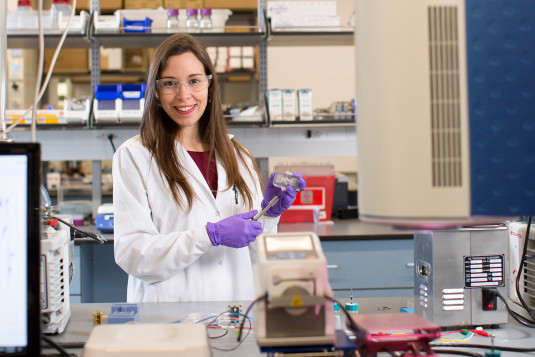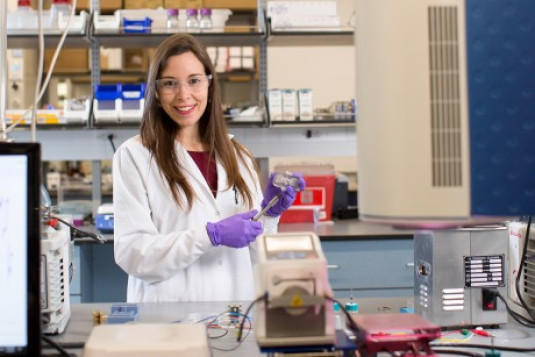
Failure or challenge?
National Medal of Technology and Innovation winner Cherry Murray and Patents for Humanity winner Irina Buhimschi may work in very different fields, but they share a common outlook on the role failure plays in the innovative process and, among other things, the importance of keeping good notes.
7 min read
Each month, our Journeys of Innovation series tells the stories of inventors or entrepreneurs whose groundbreaking innovation have made a positive difference in the world. Hear it in their own words or read the transcript below. To learn about other women inventors, check out innovative women. To read about other National Medal of Technology and Innovation (NMTI) laureates, visit greatest innovators.
Do you know an innovator or entrepreneur with an interesting story?
LINDA HOSLER: Successful inventors know that creativity, insight, and persistence are critical to innovation—no matter what the field. This is Linda Hosler from the United States Patent and Trademark Office.
Recently, I spoke with Dr. Cherry Murray and Dr. Irina Buhimschi, two award-winning inventors who work in very different fields.
Here is a bit of our conversation about their approach to, and experience with, inventing. The first response you’ll hear is from Dr. Murray.
LINDA HOSLER: I'd love to start off with—if you could each tell me a little bit about how you found the problem that you wanted to solve. So invention comes from identifying a problem, and then what led you to that problem, and then how did you solve it?
CHERRY MURRAY: It was easy for me to find the problem for the inventions that I actually patented because we were—I was at Bell Labs, and Bell Labs had a goal, which is inventing the future of telecommunications. Find some future part of telecommunications. And, specifically, I and my co-inventors were interested in optical data storage.
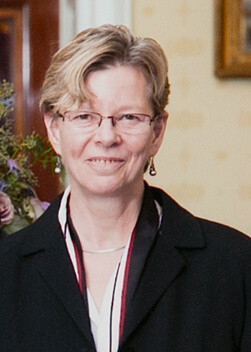
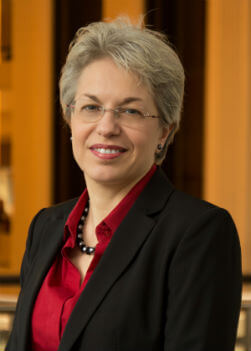
Left: Dr. Cherry Murray, Benjamin Pierce Professor of Technology and Public Policy and Professor of Physics, Harvard University
Dr. Murray began her career at Bell Labs in the late 1970s. In 2012, for her work in nanotechnology, she won the National Medal of Technology and Innovation—the nation’s highest honor for technological achievement, bestowed by the president on America’s leading innovators.
Right: Dr. Irina Buhimschi, Professor of Obstetrics and Gynecology, University of Illinois at Chicago School of Medicine
Dr. Buhimschi is the inventor of a life-saving diagnostic test for preeclampsia, a dangerous disease responsible for the death of tens of thousands pregnant women and their babies. In 2016 she won the USPTO’s Patents for Humanity award, given to innovators who use game-changing technology to meet global humanitarian challenges.
IRINA BUHIMSCHI: So my story is a bit, a bit different I think. I'm a physician, and the disease in my area is one of the most fascinating—is preeclampsia, which is a disease women get during their pregnancy, of which not a lot is known. And so for all obstetricians identifying what preeclampsia is, and really helping women navigate this problem, is always something everybody tries to do.
LINDA HOSLER: We all know that innovation is not easy and failure's part of the process. Could you each describe a certain moment or time when you felt you had failed or you wanted to quit?
IRINA BUHIMSCHI: They're just challenges; it’s just one more thing to solve. It's not really something that is a failure. I'm just curious, and I want to know what's happening, and I want to move forward. You know, I don't think anything is a failure.
CHERRY MURRAY: They're just challenges, and you just keep working at it. We decided we'd try this and we’d try that, we’d try that and see if any one of them works. And this happened to work. So it wasn't like failures. It was we already had mapped out what we were going to try, but one of them worked pretty much on the first shot.
IRINA BUHIMSCHI: As a scientist, I’m more prepared for failure than for success. It’s when it works, you say… you say, "Oh this cannot have happened.”
“… I’m more prepared for failure than for success.”
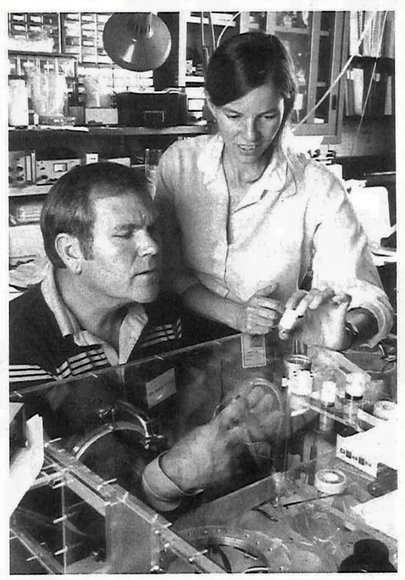
Dr. Cherry Murray at work in Bell Labs. Bell strongly encouraged employees to pursue patent protection for their discoveries.
CHERRY MURRAY: [Laughs] That’s true, yeah. We expected it wasn’t going to be that easy.
LINDA HOSLER: Could you each talk a little bit about the role of intellectual property and patents in your work? Why was it important for you to get something patented?
CHERRY MURRAY: Well, at Bell Labs making sure that you have patents was very good for your career. So scientific papers are great, but patents are even better. There was a lot of enthusiasm for this is something that, that could be patented. So it was just part of the atmosphere.
IRINA BUHIMSCHI: So the lab where I did my first postdoc knew a lot about patenting, and so I learned about it when I was there. I think that was very good for me because when I moved later and I became assistant professor in a large lab where, you know, ideas come and go, and sometimes there's this big head of the lab that takes all the credit. The fact that I was the one who sometimes was able to put things in place, as of how each idea is initiated—I felt that helped me a lot in my career to the origin of the ideas, you know, usually this was a very powerful male figure and I felt—
CHERRY MURRAY: —But you wrote it in your notebook.
IRINA BUHIMSCHI: I learned very well how to keep those notes. I teach all my students how to have their notebooks. So that, that contribution that they have to the foundation of creativity and the idea doesn't get spread.
“…scientific papers are great, but patents are even better.”

Dr. Buhimschi’s notebook (at left) describing the testing method she invented to detect preeclampsia (at right).
CHERRY MURRAY: That reminded me that our first day at Bell Labs, everyone got a patent notebook to write what you have done in the day and sign it and date it.
LINDA HOSLER: What advice would you give to other innovators?
CHERRY MURRAY: Find a problem that you really want to solve and go at it.
IRINA BUHIMSCHI: Well, I'd say that it's about your life, what you want to spend your time doing. The problem has to be important for you to spend your life on it. And there's nothing that could keep you away from doing anything you would want, if you put your mind to that.
LINDA HOSLER: Looking back on the impact of your invention, your careers, what are you most proud of?
CHERRY MURRAY: Spurring young people to be scientists and inventors. So I'm very proud of getting an atmosphere that was similar in some ways to Bell Labs, where it was an exciting place to have an idea, and it was your idea, and then you could run with it.
LINDA HOSLER: How do you foster that atmosphere?
CHERRY MURRAY: Um, it's a lot about, call it the manager of the space or the head of the lab. Or for me, I was a dean of a school. It's an attitude of everybody can do this and everybody should be doing this, and it is a very exciting place, and also very inclusive. And it works.
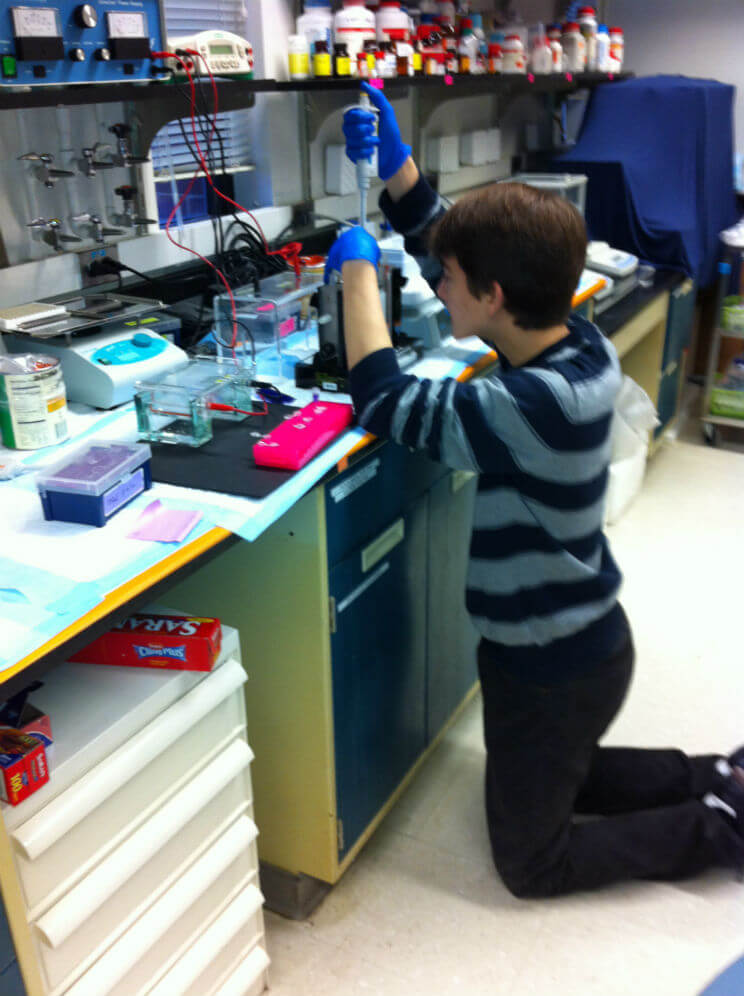
Dr. Buhimschi’s son Alex assisting in the lab.
IRINA BUHIMSCHI: I'd say my son, and he, he will be probably a scientist too, so I'm very proud I motivated him.
LINDA HOSLER: Over lunch, you told me this wonderful story about how your son was involved at the genesis of your invention. Could you tell that story again, please?
IRINA BUHIMSCHI: Yeah. It was a problem I was trying to solve for a long time. And so at one point, I serendipitously found that the structure in Alzheimer's protein was similar to the protein I was looking for, and that was kind of serendipitous. Then it all fell into place. So I knew that this, this is the big, big scheme of things that I understood. So I told my son, let’s go to the lab and do this experiment. And I—
CHERRY MURRAY: —How old was your son?
IRINA BUHIMSCHI: He was seven.
CHERRY MURRAY: Okay.
IRINA BUHIMSCHI: And I, I showed him what should happen if we mix this and this. And I said, look, if this happens, then we're in business. If not, we go home and we do dinner, and that's it. If it works, we’ll do more. And he, uh, he said, “Oh Mom, I discovered this!”
CHERRY MURRAY: So was he a co-inventor?
IRINA BUHIMSCHI: No, he always feels he should have been. [Laughter]
CHERRY MURRAY: It sounds like it.
IRINA BUHIMSCHI: I know.
CHERRY MURRAY: That’s fantastic.
LINDA HOSLER: Thank you, to doctors Buhimschi and Murray, for taking the time to sit down with us and share their experiences. Now to you at home: Go out and find that problem begging to be solved – and don’t forget your notebook. Thanks for listening.


